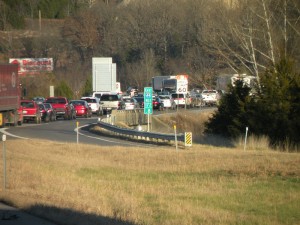Two pieces of information came out today, separately. But together, they say a lot about societal priority:
-
The Texas A&M Transportation Institute’s 2012 Urban Mobility Report was released. In it, we learn that traffic jams in major US cities are getting worse. beyond rating the most congested cities, the report suggests that by 2020 the average US driver will spend 7 more hours/year stuck in traffic. Stats for MSP? 34 hours a year stuck in traffic.
- Meanwhile, the federal Energy Information Administration (EIA) reports that the percentage of household income spent by US drivers on gasoline was the largest it has been in several decades in 2012. In 2012, gas expense equalled about 4% of pre-tax household income.
The top 5 most congested cities are big ones — Washington DC, Los Angeles, San Francisco, New York and Boston. Four of five of these are known for excellent transit systems.
Depending on who you talk to, some would argue the solution is to add transport lanes to highways. Generally speaking, that’s a reactive strategy, and doesn’t address the challenge of then maintaining that infrastructure. Building is sexy, maintaining isn’t. And funding for either is messed up, especially as fuel standards have decreased fuel consumption, and a stagnant gas tax has also impacted funding via that channel. The federal gas tax of 18.4 cents/gallon was last raised in 1993, which is to say that pretty soon it can walk into a bar and have a beer. Congress has transferred $34.5 billion from other sources into the highway trust fund since 2008.
Another approach is to charge people for miles traveled, including toll roads, congestion-based pricing, etc. This is basic economics — because there is no price on roadway access (it’s free), overconsumption results.
Obviously, the challenge is that you can’t build out of this problem through highways alone. Transit and bike/ped is critical, and the intersection of bike/ped and transit is critical — transit extends the realistic reach of active transportation options. The secondary challenge is to find funding, and to combat the idea that “transit doesn’t support itself, the subsidy!”
Well, no. But neither do roads. And as Americans spend more time in traffic — and a greater share of household income on gas to sit in traffic — a solution is going to have to happen. And more highways, ring roads, and bridges that can’t be maintained are clearly failed approaches. A solid approach, including Complete Streets, transit, bike/ped, congestion pricing, and sensitivity to low-income families, is required. As is the political vision to make it happen.
I think it will happen, but it may happen in a backward-facing way, and not in a visionary way. We’ll be cleaning up the pieces of this mess for decades. #grump


